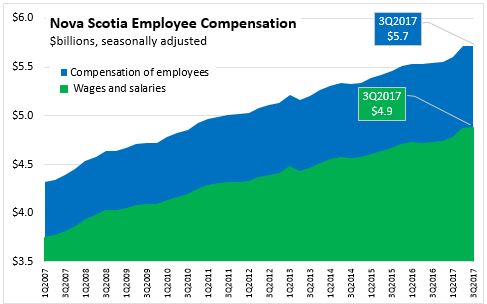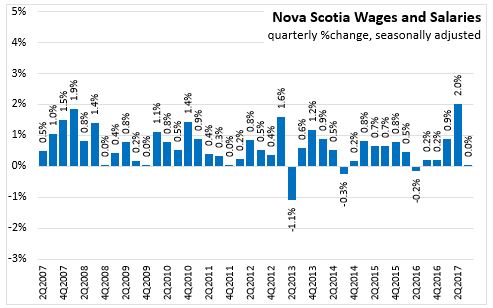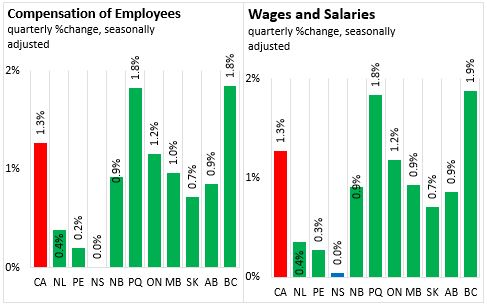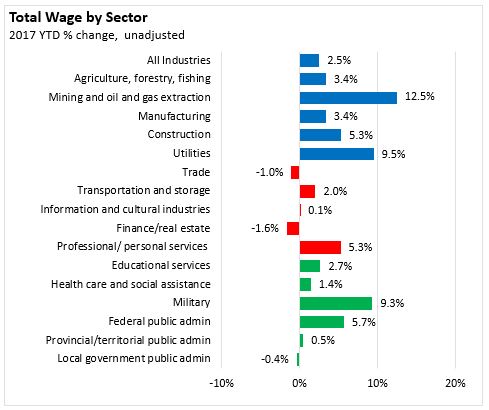The Economics and Statistics Division maintains archives of previous publications for accountability purposes, but makes no updates to keep these documents current with the latest data revisions from Statistics Canada. As a result, information in older documents may not be accurate. Please exercise caution when referring to older documents. For the latest information and historical data, please contact the individual listed to the right.
<--- Return to Archive
For additional information relating to this article, please contact:
December 01, 2017COMPENSATION OF EMPLOYEES Q3 2017 
Nova Scotia's seasonally adjusted employee compensation (wages+salaries+employer social contributions) was unchanged in the third quarter 2017 at $5.71 billion. Compared to the third quarter of 2016 compensation was up 3.1 per cent, after growing 3.3 per cent year over year in Q2. Consecutive quarters with growth of 3.0 per cent or more previously occurred in 2011.
The wages and salaries portion of employee compensation was unchanged at $4.88 billion; an increase of 3.2 per cent over the same quarter 2016. Employers' social contributions decreased 0.2 per cent in the quarter but were 2.6 per cent higher than the third quarter 2016.

For the quarter, Canada's employee compensation was up 1.3 per cent as compensation increased or was unchanged in all provinces. The fastest growth for the month was in Quebec and British Columbia (both +1.8%)

Comparing the first three quarters of 2017 with the first three quarters of 2016, Canada's employee compensation was up 3.5 per cent. Nova Scotia's employee compensation was up 2.5 per cent, faster than three provinces and slower than six provinces. British Columbia with growth of 5.8 per cent had the fastest growth while Newfoundland and Labrador at 1.4 per cent had the slowest.

Unadjusted data comparing the first three quarters of 2017 with the same period in 2016 indicates that total wages and salaries paid in the goods sector rose by 4.8 per cent. Wages and salaries were up in all goods subsectors led by growth in mining and oil and gas extraction (+12.5%) and utilities (+9.5%). The larger sector of construction (+5.3%) and manufacturing (+3.4%) accounted for most of the dollar increase in the goods sector.
Three private service sectors reported rising wages and salaries while two reported a decline. The largest gains were reported in the professional/personal services sector sectors where total wages and salaries rose 5.3 per cent (+$112 million), while the largest decline was in finance/real estate where total wages and salaries fell 1.6 per cent.
Among public and mixed public-private sectors, military total wages and salaries increased by 9.3 per cent and federal public admin increased 5.7 per cent in part due to retroactive salary payments. Total wages and salaries were also up in educational services, health care, and provincial public administration but fell for local government public administration.
Note: comparison of wages and salaries by sector rely on data that are neither seasonally adjusted nor adjusted to reflect differences in pay periods from one year to the next.


Source: CANSIM table 382-0006
<--- Return to Archive